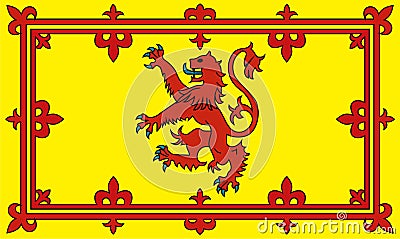The SNP lost the war in September on the referendum but won the battle in May at the general election. In the end, it was a crushing victory for the SNP in Scotland on 7 May, exceeding all bar the most optimistic predictions.
It is possible that Scotland will be independent by 2020, which would render speculation about how they would do in a general election in that year redundant. But for the moment I want to think about how the 2020 election will shape up if Scotland hasn't thrown off the English yoke by that date.
As was noted in the comments yesterday and as I have flagged previously, we are due a boundary change, perhaps with fewer seats, so comments based on existing boundaries should not be taken too seriously. But they should give us a general idea of the lay of the land in general terms. Fewer larger constituencies favour parties with greater proportionate support in general, so if the number of constituencies is reduced we can expect the SNP's position to be entrenched still further (though I would expect Orkney & Shetland to remain on its present boundaries for reasons of geography).
For once, I only need to attach a link to one table. Here are the seats that the SNP currently hold:
With 56 out of the 59 Scottish seats, the SNP lion is rampant.
Could they complete a whitewash next time? It's certainly conceivable. The three remaining seats are:
1. Dumfriesshire Clydesdale & Tweeddale (Conservative majority 1.5%)
2. Orkney & Shetland (Lib Dem majority 3.6%)
3. Edinburgh South (Labour majority of 5.3%)
A uniform swing to the SNP of under 3% would see them clear the board. Bearing in mind that they managed swings to them of on average just under 24% from Labour on 7 May, such a swing will seem like a small step to them. If the SNP are performing well in the polls in five years' time, they will fancy their chances of completing the set.
If we now turn to the seats that the SNP now hold, we can see that the SNP are in a commanding position not just in seat count but in terms of their resilience against adverse swing. If the SNP suffered a uniform adverse swing against them of 5%, they would lose just six seats. A uniform 10% adverse swing would cost them exactly half their seats. But a 10% swing is of the order achieved by Labour across the UK as a whole in 1945 and 1997 and so would represent a landslide.
It gets better for the SNP. There was apparently quite a bit of tactical voting among unionists on 7 May, and the Lib Dems appear to have benefited particularly from this. Many of the smallest majorities were former Lib Dem-held seats (including three of those six seats vulnerable to a 5% swing against the SNP). With the unionist incumbents having been turfed out, the tactical voting against the SNP is likely to dissipate to some extent at least. This will make even small swings that bit harder for the SNP's challengers to obtain.
Who are the SNP's chief enemy? Two weeks ago the answer was obviously Labour. But look at this table and now it's not so clear. Such is the scale of the SNP's obliteration of Scottish Labour, they don't even rank as the main challenger in the majority of the most marginal Scottish constituencies. Labour are second in only nine of the 20 most marginal Scottish constituencies, as compared with the Lib Dems' seven and the Conservatives' four. Even if Labour can get the landslide 10% swing against the SNP referred to above, they would still only take 15 seats back - the other 13 would fall to the Lib Dems (eight) and the Conservatives (five).
Moreover, in at least four or five of what are now the most marginal Scottish seats, Labour's support seems to have been sustained in significant part by tactical unionist votes. It must be questionable whether these tactical votes can be kept. Labour seem to have done best - or rather, least badly - in pro-unionist areas which had sitting MPs who were able to reach out across party boundaries. With those sitting MPs presumably unlikely to stand again in 2020, any personal vote will be lost. And with Scottish Labour currently looking likely to turn leftwards, they don't look particularly likely to be replaced by candidates who will even try to reach out across party boundaries.
The Conservatives will be hoping to make some progress in 2020, with an unwinding of tactical voting for other unionist parties following the loss of incumbency. But Scottish Conservatives' idea of progress would be to take a handful of seats and to come second in a handful more.
So all in all, the SNP look set very fair to dominate in 2020 just as they do in 2015, assuming always that Scotland is still in the union. For that domination to be put under threat, Scottish politics would need as much of an upheaval as it got in the last Parliament. Is that possible? Sure, it has already happened once and very recently. Is it particularly likely? No. We look to be living in a new electoral landscape in Scotland. We all need to get used to it.


2 comments:
BRS and Edinburgh North and Leith look to the only two possible losses in 2020 to me.
Watch out, if the SNP disappoint, for either the Greens or the new Left party, which is likely to emerge over the next few months... I doubt they'll win any seats in 2020, but they might change the running orders and majorities in some marginalised and urban stays.
Post a Comment